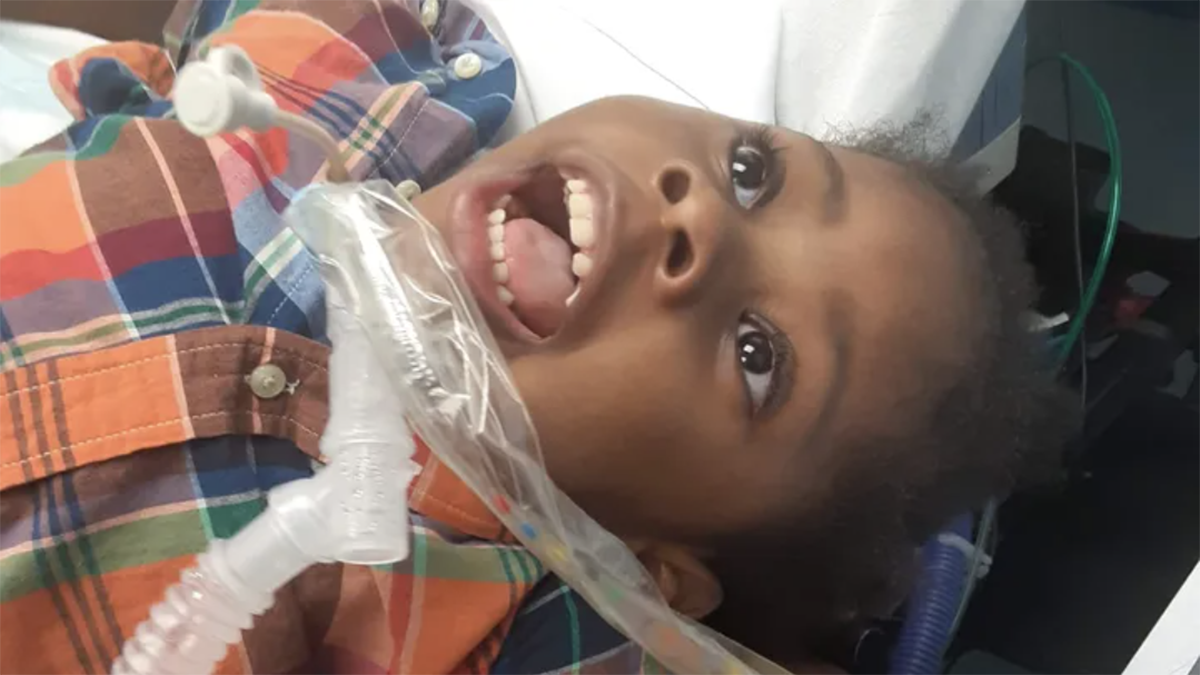Have you ever heard of red-light therapy? Cold plunges? What about grounding, or peptides?
These are all examples of a term that’s taken the world by storm called "biohacking."
According to the Merriam Webster Dictionary, biohacking is the experimentation done on oneself through a variety of drugs, treatments or practices to improve the qualities or capabilities of life. Basically, it’s using means outside of traditional medical or scientific research to try and not only make your life better, but potentially live longer.
It’s a controversial topic that has lots of people talking.
The Hurricane season is on. Our meteorologists are ready. Sign up for the NBC 6 Weather newsletter to get the latest forecast in your inbox.
Back in 2020, Sandy Martin was sick, she says not "being able to have the energy to stay awake past 7/8 o’clock a night was devastating to me, and it was going to impact my future, my career, everything. So, I started to invest money into solving the puzzle.”
She spent $97,000 in a year to try to figure out the problem.
"I bought an oxygen chamber, I went off the deep end because I was scared. I bought a red-light therapy, sauna, I had a helmet called the v light that was putting infrared and red light into my brain. And it wasn’t the right approach, because I didn’t know the root cause of what was making me sick," she said.
Local
The cause was a mold infection. Martin says that eventually she healed by using biohacking.
The transformation was so significant she now runs South Florida’s Biohacker Expo that has more than 1,600 attendees who are eager to learn more about the field.
In her personal life, Martin has seen what biohacks can do on more than one occasion.
Her father has neuropathy in both feet. Martin claims that traditional Western doctors were unable to help him, so she used a vibrating foot bath, Epsom salt soaks and red light.
“And now, he can raise his toes ever so slightly and he doesn’t have to stick his leg out to walk. And it took a year.”
Martin is among thousands globally who have jumped on the biohacking train. According to the Business Research Company, the biohacking field is expected to grow to $36.41 billion in 2024. By 2032, Market US says it will be worth $83 billion.
OPTIMIZING LIFE
“I stepped into biohacking almost 20 years ago when biohacking first got started,” said Jean Fallacara.
Fallacara is the CEO of Biohackers Magazine and his company Lifespanning. He is one of the pioneers of the biohacking movement alongside celebrities like Dave Asprey and Ben Greenfield.
He identifies as a scientist and a guinea pig to the biohacking movement.
“I started to use tracers, trackers, I got them all from Garmin and Fit Bit and back then AI didn’t exist so I was making all the calculations and models on excel sheets, and I was trying to see how I could improve my life and my performances. My HRV, my heart rate, my rest and everything. And from there I never quit.”
His day consists of cold plunges and saunas. Every day, he works for 90 minutes and then walks, and repeats that pattern. He also uses a range of different devices.
Fallacara is 57, but says because he’s spent years experimenting, his biological age is 33.
“I am not a fan of living forever, I am more a fan of optimizing life,” he explained.
And there are limits to what he will do.
“I would never take a risk of putting 220 volts in your brain because you are going to be in delta wave in two minutes," Fallacara said. "No, I’m not going to do that.”
But with a simple search on social media one will find thousands of videos of people of all backgrounds and ages trying different techniques to try and achieve what Fallacara has already done.
'DANGEROUS NOISE'
And while many will praise its results, there are pushbacks to the movement, one of which is the lack of proven research that would indicate that these practices do in fact work.
It’s what causes doctors like Dr. Nir Barzilai to be skeptical.
“The things that are bothering us is that people are doing things without clinical studies. And that’s very important, and very important to educate the people that when they hear something exciting and that they will live forever, the evidence isn’t what they say. It’s [that] they took people and half of them got this treatment and half of them got placebo,” Barzilai said.
He says emphatically: “Biohacking is good, but what are your tools? It’s complicated.”
Barzilai is the President of the Academy of Health and Lifespan Research, and the Director of the Institute for Aging Research.
His fear is that people are just blindly listening to people who call themselves "biohackers."
“If somebody is biohacking and they are biohacking themselves, what does it mean to the others? This is an experiment of one, and in fact I’d argue that this isn’t an experiment if it’s one,” explains Dr. Barzilai.
“I don’t want things out there that haven’t been studied. If the biohackers will take their millions of dollars and do a small study with many people who have a different genetic background and have some outcomes it can be reviewed in a paper, I would say yes, that’s great. But otherwise, that’s noise and a dangerous noise.”
Barzilai’s work is in the field of conventional Western medicine, but he says his efforts are a form of biohacking.
For Dr. Mark Zhuk, it's the same.
The medical director at Q Institute specializes in early disease detection and optimizing one’s overall health. His background is in conventional medicine, like what Barzilai practices.
But Zhuk’s approach is different: “I sort of refocused my practice so that Western medicine solutions were only used as a last resort. And I use the practice of health optimization and biohacking to help my patients achieve optimal health.”
He conducts diagnostics to understand someone’s internal biochemistry, and then provide the biohacks necessary. His reservation is in people taking the term and running with it.
“Biohacking is based on the premise of hormesis. Hormesis is where a chemical or physical stressor to the body exhibits a positive biological response. The problem is it’s all dose related, and if you overdo it, you can set someone back,” said Zhuk.
“For example, cold plunging. We know that somewhere between 3 to 6 minutes is optimal, anything more could be too much of a stressor and impacts our biology negatively. And the same goes for all different types of biohacks.”
THE LIMITS
While he passionately considers himself to be part of the movement, Dr. Zhuk knows the fields limits.
“Having a background in Western medicine helps because I know when the limits of holistic or biohacking approaches are reached when it comes to treating a problem, and I know when it’s time for Western medicine to intervene. And unfortunately, not everyone in the biohacking world has my experience in the Western medicine to understand, hold on a second, what we are doing isn’t working. It’s time to go and consume Western medicine,” he explained.
But biohackers like Martin and Fallacara say all their techniques come down to the use of natural elements like sunlight, water, minerals and nutrients.
Martin believes that Western medicine does more harm than good.
“They are safer giving a pill because it is a tried-and-true standard of care that the insurance and hospitals can get behind. Telling a person that doesn’t have a history of moving their body and eating clean that they should do those things, is not a reliable recommendation.”
Dr. Elliot Dinetz agrees that “people want to live longer, live better, and we are not seeing that in primary care of course or conventional medical establishment. We are seeing shorter visits, and we know the field has its issues.”
The board-certified primary care functional medicine physician says that his work is the gap between legitimate aspects to biohacking and the traditional Western medical practices. His work is centered on lifestyle and the microbiome to figure out how to cure chronic illness and provide better quality of life.
His concern with the biohacking space is with information being shared, and by who.
“We have biohackers with no medical background, training or expertise and become popular because of a podcast or because of a celebrity that they have treated. And I always say it’s important to look at word of mouth but also the responsibility. If anything were to happen in the hands of those people, what do you think would happen? Would that person have repercussions? And it’s the same across any non-professional medical, and that means M.D. or D.O. field, that they would not be responsible for that.”
“You want to work with people who are essentially licensed and insured to make sure they are doing what’s in the patients best interest,” he added.
Dr. Dinetz wants those utilizing biohacking practices to do so with caution.
“Under no circumstance do I believe that biohackers should have access to administering IVs or peptides. These are for certain medications that are intravenous and introduce a lot of potential harm and complication that at best are just a waste of money,” Dinetz said.
According to a report by the Global Wellness Institute, the average American spends $5,300 dollars every year on wellness.
Most biohacking practices are not covered by insurance which makes it out of reach for many people.
"Longevity should be mainstream, should be available to everyone. Eight billion people on this planet have the right to live longer. So, we are not doing the right thing by saying we are spending $2 million a year on our health,” said Fallacara.



